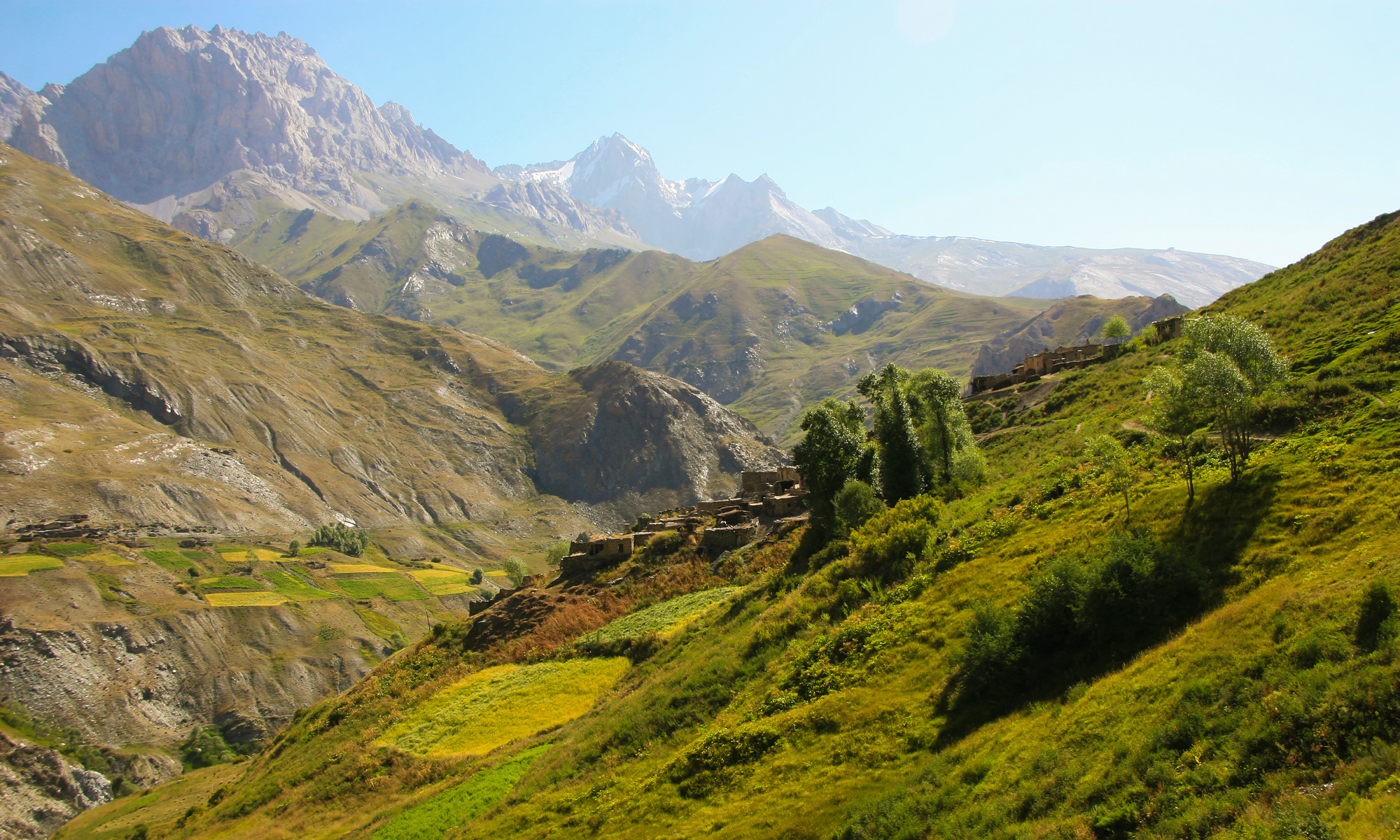Harvest begins with memory.
In the Yaghnob Valley, the growing season once unfolded like a quiet chorus: barley bending under mountain air, the scent of new grain on breeze-steeped terraces, the hushed blessing of the first sheaf pressed into a window sill or ledge where sunrise lingered longest.
Even then, harvest was more than bustle—it was attunement. Every rhythm, every planted row spoke to relationships: to elders, to soil, to snow hiding in gullies above.
Then came exile.
In the 1970s, when retold, that moment feels like a fracture in spatial knowing. The land didn’t just shift—it slipped out of collective reach. The barley fields they settled instead were flat, impersonal. The silence of terraces gave way to the hum of unfamiliar plains.
The barley songs drifted southward too—into kitchens, into half-remembered verse, murmured by mothers to children who had never seen the peaks that once keyed each verse to winter’s edge, to snow’s melt, to a bird’s return.
What was ritual became memory.
Memory, untethered from place, grows faint. But it endures.
When villagers returned—by car, on foot, in longing—they brought more than seed packets. They carried resonance: a handful of barley, a half-forgotten song, a gesture of remembrance. In Margib and other hamlets, they replanted orchards, rebuilt terraces, rebuilt themselves.
They didn’t rebuild old Yaghnob. But they reached for its pulse.
That first sheaf on a windowsill wasn’t a literal offering. It was a bridge between what was known and what could still be known.
Children learned the words again—not because they had to, but because memory required it.
Songs are not just sounds; they encode rhythms. To say the barley song in Yaghnobi is to say late-summer scents, the angle of light on curled rye, the fly of locust prayer across the fields. To lose the song is to silence the valley’s bearings.
In exile, those bearings became imprecise. In return, they have had to be relearned.
And yet—when individuals return, ecological tracking returns too. But changed. Snow arrives earlier; rain follows different patterns. The old verses don’t always match the planting calendar that today’s climate demands.
Still, ritual functions not as map—but as compass.
Ritual doesn’t need replication; it needs re-rooting.
-
Gather elders and children to harvest—letting generations speak the same space the grain once did.
-
Teach verses of planting in tandem with resilience and adaptation.
-
Frame harvest as survival protocol—not folklore—for living economies, environmental fluctuation, and cultural remembrance.
-
Treat barley rituals, not as customs, but as knowledge archives.
Thus, Yaghnob does not reinvent memory. It rediscovers it.
